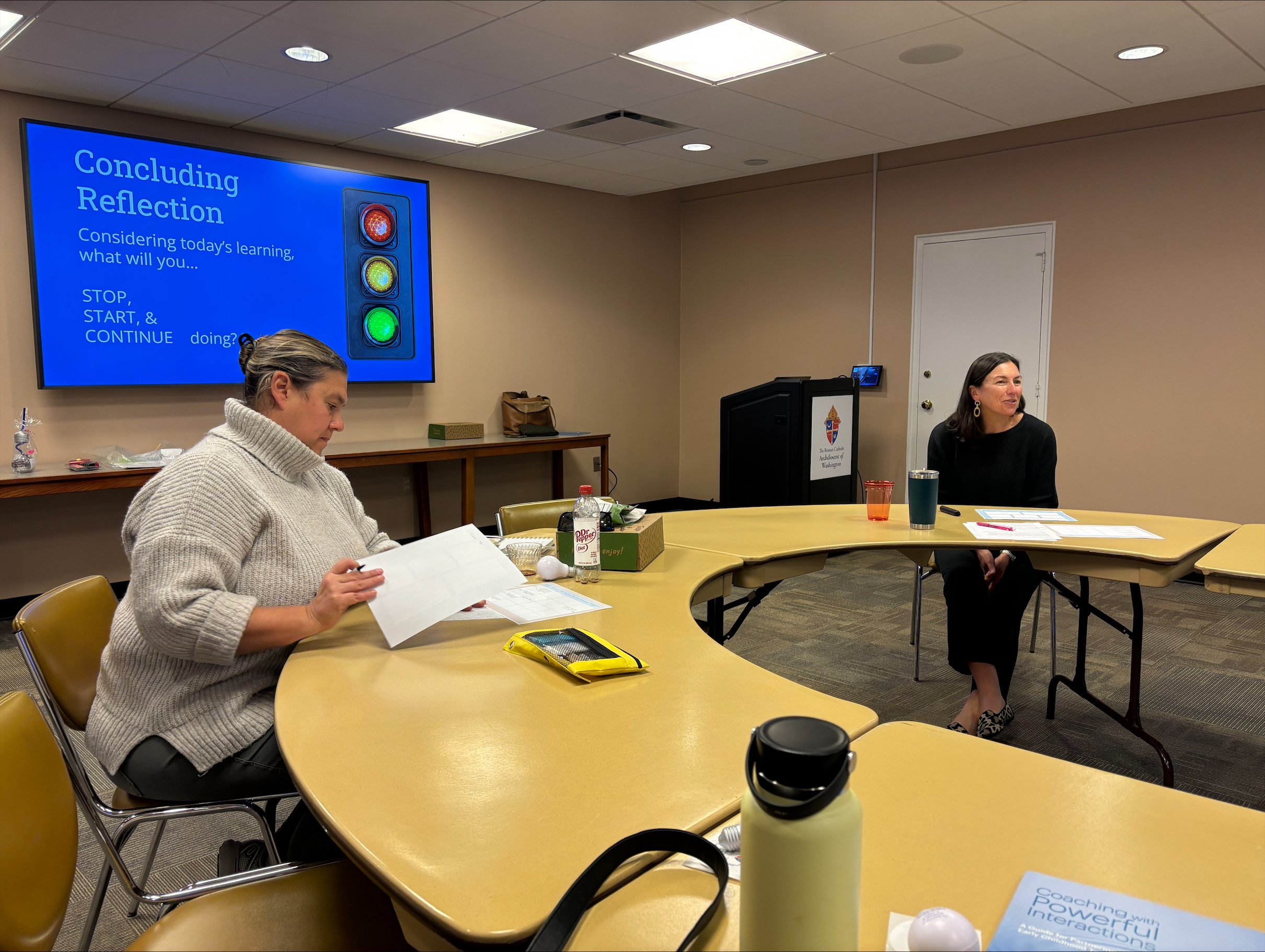Driving Into 2025 With Simplicity and Intentionality 🚦
While our schools in December seem to be tornadoes of activity that must be packed into a few short weeks, when it’s all over it will be time for the midyear pause, when, as the internet memes describe, we’ll “slam our laptops shut ‘til January.”
I have always loved an opportunity for reflection (both looking back and looking ahead), and with that in mind, I want to give you a tool for New Year goal setting.
When the new year comes around, you might set new goals or check in on existing goals for yourself, with teachers one-on-one, or with the whole faculty.
This tool is useful in all of those contexts.
It’s fun, colorful, and concrete. And if you know me, you know I love a metaphor--this one ticks that box, too.
Traffic Light Reflection
As you consider the year ahead…
🔴 What do you want to STOP doing?
🟡 What do you want to CONTINUE doing?
🟢 What do you want to START doing?
I’m particularly fond of the yellow-light prompt, as it gives a moment to highlight what we’re doing well. Sometimes when we’re talking about fresh starts, we can get the impression we have to fully begin anew, but it’s not a total clean-out! The yellow-light prompt helps us choose what we will keep doing and why, so our actions remain aligned with our goals.
These three questions prompt one to consider:
🛑 What am I doing or participating in that’s not serving my goals or those of my school? What would happen if I stopped doing it?
🚖 What actions or behaviors are currently serving my goals and yielding desired results; how can I be intentional about continuing it?
🌱 What can I begin to do to refine my practice or accelerate pace toward my or my school’s goals?
Three Scenarios for Using the Traffic Light Reflection with Teachers
Envisioning a new start, such as 2025 or a new school year
Integrating new professional learning into practice: Considering the new learning, what will you start, stop, and continue doing in your teaching practice?
As part of the teacher evaluation protocol: Considering your professional learning goals for the year, what practices might you start, stop, and continue doing?
Can I Use the Traffic Light Reflection with Students?
With some scaffolds depending on the grade level, students can use this protocol to turn learning into practice. Here are a few possible scenarios:
Behavior reflection: Students can name how they have learned from a behavior misstep by identifying what they will start, stop, and continue doing to avoid similar consequences in the future.
As a study skills reflection: At the end of the marking period, students can review their progress toward their yearly learning goals, then assess what they should start, stop, and continue doing as they begin the next quarter or semester.
As part of an SEL reflection: As students consider their goals for self-awareness, self-management, decision-making, and interpersonal skills, they might identify behaviors to start, stop, and/or continue.
The purpose of this protocol is to clarify actions that will lead to the desired results, whether it is a teacher hoping to improve student engagement or a student aiming to improve their grade in a specific class.
Logistical Considerations
As you consider the context in which you’ll employ this protocol, I encourage a bit of thought on logistics.
Will you use chart paper (or a whiteboard) and sticky notes? This is ideal when you want to view collective responses. Insights may arise from trends among the group, whether it is students or educators.
Will you use individual handouts with the traffic light reflection graphic organizer? This is ideal when you want to provide participants with individual thinking and writing time. In this scenario, I always invite the sharing of what people want to start, stop, and continue doing. As a facilitator, I use this type of closing to end with a celebration of the group’s learning. It allows the learning session to close on a note of hope and inspiration borne of the participants’ insights, which is right where I want the focus: on participants’ intended actions as a result of the professional learning.
Access the Traffic Light Reflection:
Teach Learn Thrive is professional development that energizes educators, unites school communities, and inspires more teacher joy!
I’m Sarah Dugan, PD creator, instructional coach, and founder of Teach Learn Thrive.
Throughout my 10 years as a teacher, I adored my students, reveled in the content, and delighted in pushing students beyond their perceived limits. Now, I love helping teachers stay empowered with new skills and tools while reigniting their excitement for the important, necessary work we get to do.
My mission is to reconnect educators to their purpose in this work and empower them so they can continue thriving and impacting students’ lives.
Contact me today to find out how I can serve you or your faculty.


